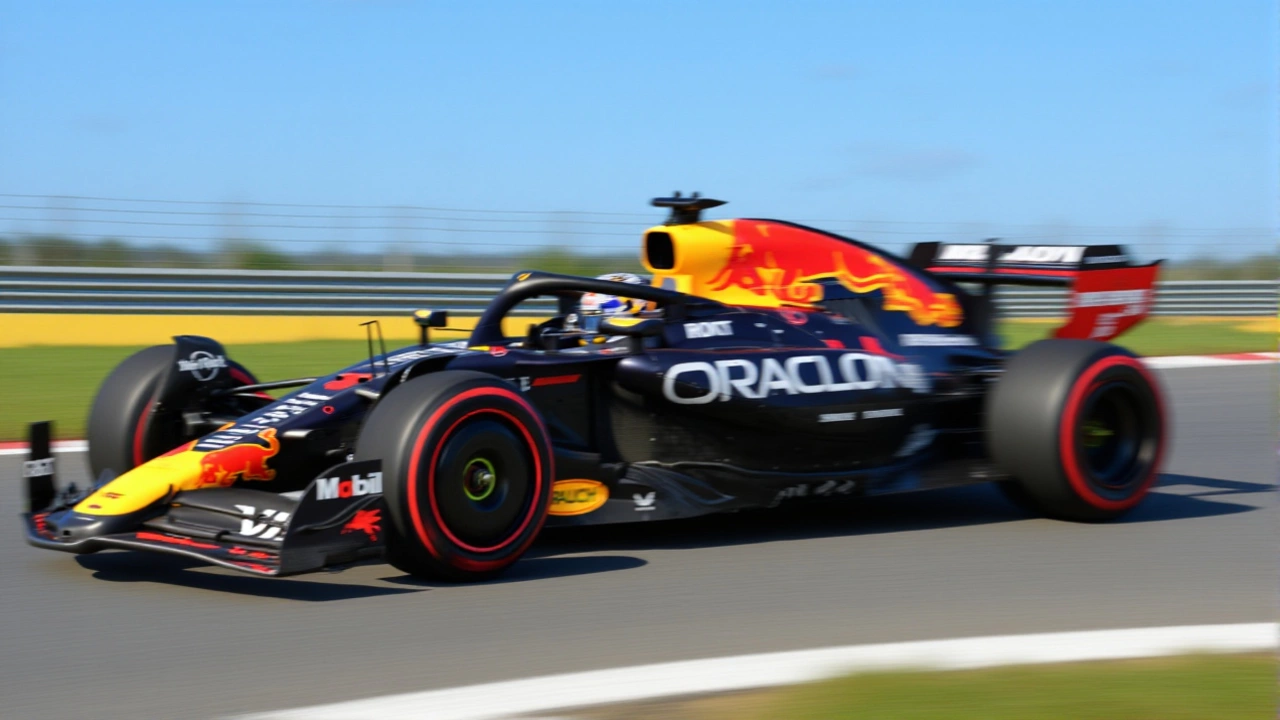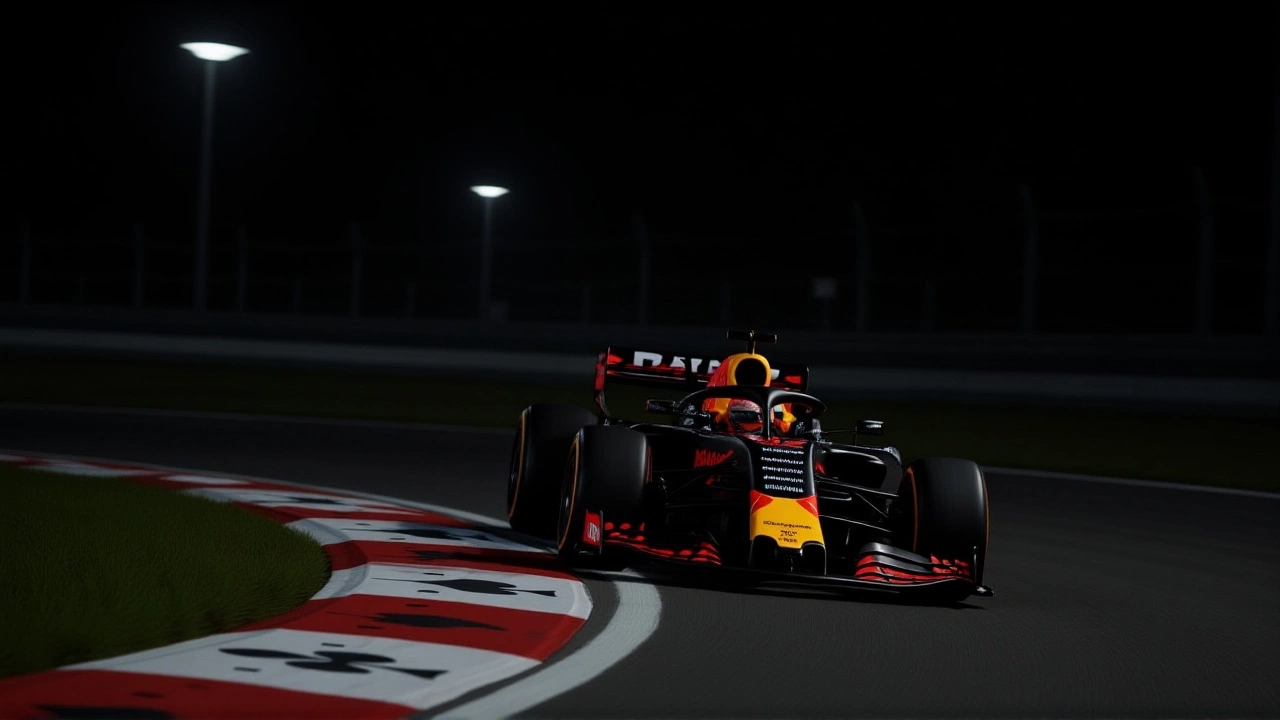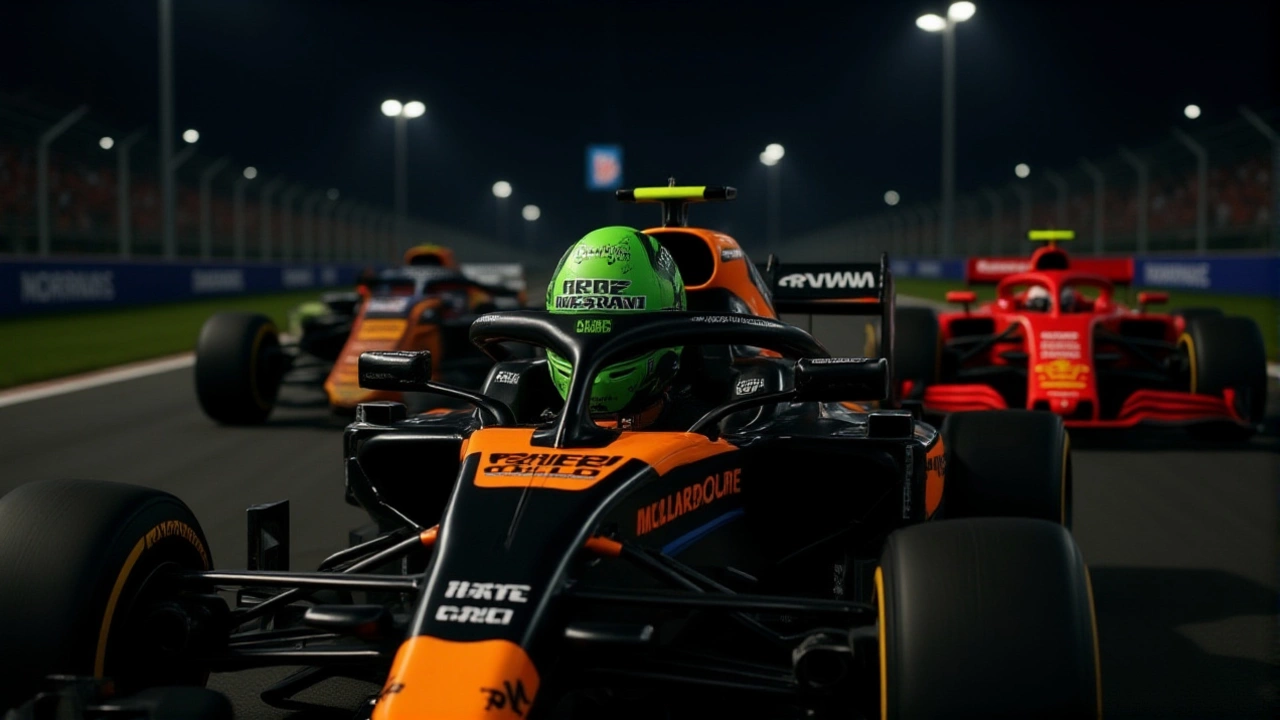On Sunday, November 23, 2025, just hours after Max Verstappen crossed the finish line on the Las Vegas Strip, the McLaren Racing Limited dream of a dominant 1-4 finish collapsed — not from mechanical failure or a collision, but from a sliver of carbon fiber too thin to meet the rules. Both Lando Norris and Oscar Piastri were disqualified from the Las Vegas Grand PrixParadise, Nevada, after their skid blocks, the protective planks under the car, were found to be below the 9mm minimum thickness mandated by Technical Regulation Article 3.5.9 e. The rearmost skid on chassis #81 (Norris) and #04 (Piastri) measured just 8.7mm and 8.6mm respectively — a difference so small, it’s the thickness of a credit card’s corner. But in F1, where margins are measured in millimeters and milliseconds, that’s enough to erase two podiums and rewrite the championship narrative.
What Went Wrong on the Strip?
The issue wasn’t sabotage. It wasn’t even negligence, according to the FIA. Team Principal Andrea Stella admitted the team had pushed the car’s aerodynamic setup to the edge — a strategy borrowed from Mercedes’ 2024 approach, using a high-downforce wing configuration similar to Spa, designed to grip the tight, bumpy Vegas layout. But what worked in practice and qualifying — cool, damp, and slow — became a disaster in the dry, high-speed race conditions. The car began porpoising: a violent, rhythmic bouncing that wasn’t present earlier in the weekend. The low ride height, meant to maximize downforce, turned into a liability. Each bounce scraped the skid block harder than expected, wearing it down past the legal limit."It’s frustrating to lose so many points," Norris said after the hearing. "We had to manage the car at the end, and now we know why — it was tearing itself apart under our feet. We didn’t see this coming. None of us did."
The Championship Domino Effect
Before the disqualification, Norris led the Drivers’ Championship with 30 points over Piastri and 42 over Verstappen. Now? Verstappen trails Norris by just 24 points. Piastri and Verstappen are tied. The points swing was seismic. With only two races left — Qatar on November 29-30, then Abu Dhabi — McLaren’s title hopes are hanging by a thread. The team had been on track to lock down a constructors’ title, but now, Red Bull is back in the hunt. And Mercedes? They were quietly promoted to second and third on the podium, with Lewis Hamilton and George Russell stepping onto the podium where McLaren once stood."This is the cruel irony of F1," said former engineer and current analyst Elena Vargas. "You design for speed, not survival. You push the limits because that’s the game. But when the car starts dancing on the edge of the rules, you don’t get a warning — you get erased from the results."

A Pattern Emerges
This isn’t the first time skid block violations have cost teams dearly in 2025. Earlier this season, Lewis Hamilton was disqualified from the Chinese Grand Prix for the same issue. Nico Hülkenberg suffered the same fate in Bahrain. All three cases point to one trend: teams are increasingly pushing ride heights lower to gain aerodynamic advantage, and the FIA’s enforcement is becoming more precise — and more unforgiving. The skid block, once a passive safety device, is now a de facto compliance meter. Teams can’t hide behind "it was an accident." The FIA’s technical delegate, TD039 M, used laser scans and digital modeling to confirm the wear — data that’s now public and irrefutable.McLaren’s Apology and the Road to Qatar
McLaren issued a rare, heartfelt apology: "We’re sorry to Lando, Oscar, our partners, and our fans. You gave us everything this weekend, and we let you down." The team didn’t blame the drivers. They didn’t blame the engineers. They blamed the conditions — the dry track, the unexpected porpoising, the setup choice that looked brilliant on paper but failed in practice."We’re not making excuses," Stella told reporters. "We made a call. We lost. We’ll learn." The team’s focus now shifts to the Lusail International Circuit in Doha, Qatar, where they’ve historically been strong. The track’s smoother surface and consistent temperatures may be the antidote to Vegas’ chaos. But with Red Bull closing in and Mercedes surging, there’s no room for error. McLaren’s engineers are already redesigning the skid block mounting system — adding a secondary wear indicator and a real-time monitoring sensor to alert the team if the plank dips below 9.2mm during a session. It’s a band-aid, but in F1, band-aids are often the difference between glory and disgrace.

What This Means for the Rest of the Season
The disqualification has shifted the championship from a McLaren coronation to a three-way battle. Verstappen, who won in Vegas, now has momentum. Norris, once the clear favorite, must now fight for every point. And Piastri? He’s no longer the underdog — he’s a contender. The psychological toll on the drivers is real. Norris, who led every session in Vegas until the final check, now carries the weight of a team’s mistake. Piastri, who quietly delivered a flawless race, is left wondering if his efforts will ever be enough."It’s not just about points," said one insider close to the team. "It’s about trust. The drivers trusted the car. The engineers trusted the data. The fans trusted the team. And now, all of that has to be rebuilt — one lap at a time."
Frequently Asked Questions
Why does the FIA enforce a 9mm skid block minimum?
The 9mm skid block rule was introduced in the 1990s to prevent teams from running cars too low to the ground, which creates dangerous aerodynamic ground effects and increases the risk of cars becoming airborne. The plank acts as a physical barrier — if it wears below 9mm, it means the car was likely scraping the track surface at unsafe levels, compromising safety and fairness. The FIA uses laser scans and calibrated gauges to measure wear at multiple points, ensuring no team gains an unfair aerodynamic advantage through illegal ride heights.
How did porpoising contribute to the violation?
Porpoising is a high-frequency bouncing caused by the car’s aerodynamic floor losing downforce as it rises, then slamming back down. In Vegas, McLaren’s low ride height — chosen to maximize grip — amplified this effect. Each bounce caused the skid block to strike the asphalt harder than during practice, accelerating wear. The team didn’t see this in simulation because practice sessions were run on damp, slower track conditions, not the dry, high-speed race setup that triggered the violent oscillations.
Who benefits from McLaren’s disqualification?
Max Verstappen gains 18 points in the Drivers’ Championship, reducing Norris’s lead from 42 to just 24. Oscar Piastri, now tied with Verstappen, is no longer a teammate in the shadow of Norris — he’s a direct rival. Mercedes, promoted to second and third, earned 33 points instead of 15, giving them crucial momentum heading into Qatar. The Constructors’ Championship battle between McLaren and Red Bull is now a coin flip — and Mercedes could even sneak into second if they score consistently.
Are other teams at risk of similar disqualifications?
Yes. Every team running ultra-low ride heights — including Red Bull, Mercedes, and Ferrari — is now under heightened scrutiny. The FIA has signaled it will increase skid block checks at every race, especially on street circuits like Singapore and Monaco. Teams are already adjusting their setups to add 0.5mm of clearance as a buffer. The 9mm rule is no longer just a technicality — it’s a tactical constraint that will define race strategy for the rest of the season.
What’s next for McLaren after Vegas?
McLaren is overhauling its pre-race simulation models to better predict porpoising under dry conditions. They’ve also redesigned the skid block mounting to include a real-time wear alert system. The team’s engineers are working 18-hour days in Woking to prepare for Qatar, where the track’s smoother surface could neutralize their Vegas mistake. But the bigger challenge is restoring confidence — in the car, in the strategy, and in the drivers who gave everything only to be punished for a flaw they didn’t see coming.
Could McLaren appeal the disqualification?
Technically, yes — but it’s unlikely. The FIA’s measurements were conducted using certified equipment, witnessed by independent inspectors, and matched against the team’s own submitted legality documents. McLaren admitted the breach was unintentional, which reduces penalties but doesn’t overturn the disqualification. The FIA has been consistent this season: unintentional violations still carry the same consequence — deletion from results. An appeal would risk appearing defensive, and McLaren knows their best path forward is to learn, adapt, and move on.

Author
Xander Fairholm
Hi, I'm Xander Fairholm, a passionate blogger and expert in all things related to blogging. For years, I have been honing my craft and helping others improve their blogs by sharing my knowledge and experience. I enjoy writing about various topics, from blog design to content strategy, and I always stay up-to-date with the latest trends in the blogging world. My goal is to inspire and educate my readers, helping them create successful blogs that they can be proud of.